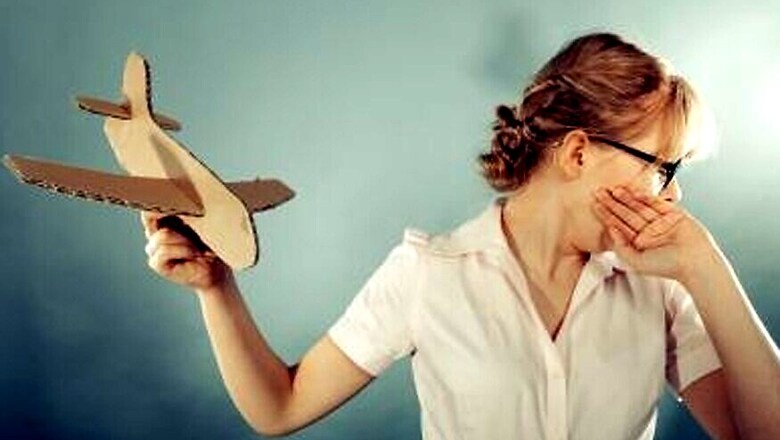
views
As the summer getaway approaches, some holidaymakers will have to brave their fear of flying to reach their chosen destination. Aside from flight simulators and psychotherapy, a few sophrology sessions can help fearful flyers manage this complex phobia. This visualization-based technique should ideally be started two months before takeoff for optimal preparation.
Learn to relax, learn to breathe
When faced with anxiety or fear, the body must be calmed from a state of constant alertness. For a lot of people, flying is experienced as a loss of control. This can lead to symptoms caused by a state of "hypervigilance" -- such as palpitations, shortness of breath, feelings of suffocation, sweaty palms, shaking or trembling, dizziness, hot flashes -- which can soon become a living nightmare.
Understanding how a plane works (air pockets, turbulence, etc.) and taking control of your thoughts can help some nervous flyers. However, fear is, by definition, deep rooted, which is why it's necessary to address the body too. Sophrology can teach people how to relax and use breathing techniques that can favor emotional liberation and a more serene state of mind. One exercise, for example, involves breathing in for four seconds, using a deep abdominal breathing technique, then breathing out for six seconds. That makes around six breaths per minute.
Visualize each stage of the journey
Like a high-level sportsperson preparing a match or a race from A to Z, fearful flyers could use a sophrology session to visualize each stage of the journey they're about to make, from leaving the house, arriving at the airport and checking in, to the critical take-off phase, cruising and landing. Visualization immerses you in all these situations within the calm confines of your own mind and body.
Over time, this technique allows flyers to rehearse the experience, so when the big day arrives, it doesn't feel like the first time. The more you repeat an action, the more it becomes familiar, and the less you think about it. Sophrology sessions can often be recorded to continue pre-flight preparation at home.
Target the most stressful phase
Everyone is different, and the root of the phobia won't be the same for each flyer. Common fears include accidents, technical problems and crashes, for example, but some may be afraid of having a panic attack during the flight, or have other phobias at play (claustrophobia, agoraphobia, fear of heights). Part of the sophrology technique helps phobics get as close as possible mentally to their specific blockage, progressively undoing the negative association established by the brain. For some, the most stressful phase will be takeoff, while others may apprehend arrival at the airport.
A new fear of flying application called Fofly, available free for iOS and Android, is inspired by these different techniques. It features a breathing exercise based on cardiac coherence to bring down stress levels once onboard the plane, as well as four pieces of relaxing music and theory lessons.
Sophrology sessions are a less costly option than the fear of flying courses often run by major airlines. It takes five to ten sessions to see effective results.




















Comments
0 comment